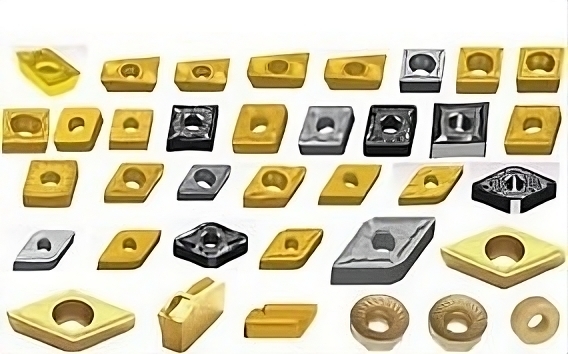Menu
Menu
Cutting Tools
Carbide end mills
Carbide Drills
Boring Bars
Countersinks
Fiberglass Routers
2 Flute
4 Flute
Roughing
Roughing
Double End Mills
Center Drill

Cobra Carbide is a leader in the production of high-performance cutting tools, including carbide inserts for CNC machines. Whether you're looking for precision, durability, or superior cutting performance, Cobra Carbide inserts deliver exceptional results across a range of machining applications.
Carbide inserts are replaceable cutting tools used in CNC machines for tasks such as turning, milling, and cutting metal. The purpose of a carbide insert is to offer a durable, high-performance edge that cuts through hard materials like steel, cast iron, and non-ferrous metals efficiently. Cobra Carbide inserts are designed to provide precision and longevity, ensuring smooth machining operations and reduced tool wear.
Increased Durability: Carbide inserts are made from tungsten carbide, one of the hardest materials available, which means they last longer than traditional cutting tools. Cobra Carbide inserts, in particular, are engineered to withstand high temperatures and wear, offering superior tool life.
Better Surface Finish: Using Cobra Carbide inserts ensures a high-quality surface finish. These inserts are designed to reduce friction during cutting, leading to smoother results and minimizing post-machining processing.
CNC machines use a variety of carbide inserts depending on the application. Cobra Carbide offers inserts for turning, milling, and drilling operations. Common types include:
Turning Inserts: Used for external and internal turning applications.
Milling Inserts: Designed for high-speed milling tasks, providing efficiency and precision.
Drilling Inserts: Used for precise hole-making, ensuring accuracy in CNC machining. Cobra Carbide’s inserts are available in multiple shapes, including square, round, and triangular, to suit different cutting needs.
Choosing the right size of carbide insert depends on the material you're machining, the type of operation, and the machine’s specifications. Cobra Carbide provides a comprehensive sizing guide, helping machinists select the ideal insert for their specific task. Generally, larger inserts are used for heavier cutting, while smaller inserts are ideal for precision work. Factors like feed rate, depth of cut, and cutting speed also influence the size selection.
